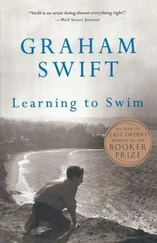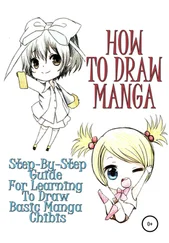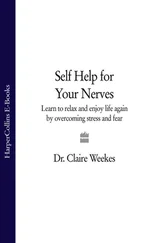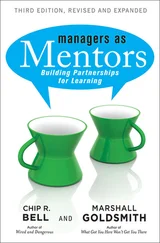163 125
164 126
165 127
166 128
167 129
168 130
169 131
170 132
171 133
172 134
173 135
174 136
175 137
176 138
177 139
178 140
179 141
180 142
181 143
182 144
183 145
184 146
185 147
186 148
187 149
188 150
189 151
190 152
191 153
192 154
193 155
194 156
195 157
196 159
197 160
198 161
199 162
200 163
201 164
202 165
203 166
204 167
205 168
206 169
207 170
208 171
209 172
210 173
211 174
212 175
213 176
214 177
215 178
216 179
217 180
218 181
219 182
220 183
221 184
222 185
223 186
224 187
225 188
226 189
Education Set
coordinated by
Angela Barthes and Anne-Laure Le Guern
Volume 10
Objects to Learn About and Objects for Learning 1
Which Teaching Practices for Which Issues?
Edited by
Joël Bisault
Roselyne Le Bourgeois
Jean-François Thémines
Mickaël Le Mentec
Céline Chauvet-Chanoine

First published 2022 in Great Britain and the United States by ISTE Ltd and John Wiley & Sons, Inc.
Apart from any fair dealing for the purposes of research or private study, or criticism or review, as permitted under the Copyright, Designs and Patents Act 1988, this publication may only be reproduced, stored or transmitted, in any form or by any means, with the prior permission in writing of the publishers, or in the case of reprographic reproduction in accordance with the terms and licenses issued by the CLA. Enquiries concerning reproduction outside these terms should be sent to the publishers at the undermentioned address:
ISTE Ltd
27-37 St George’s Road
London SW19 4EU
UK
www.iste.co.ukJohn Wiley & Sons, Inc. 111 River Street Hoboken, NJ 07030 USA
www.wiley.com
© ISTE Ltd 2022
The rights of Joël Bisault, Roselyne Le Bourgeois, Jean-François Thémines, Mickaël Le Mentec and Céline Chauvet-Chanoine to be identified as the authors of this work have been asserted by them in accordance with the Copyright, Designs and Patents Act 1988.
Any opinions, findings, and conclusions or recommendations expressed in this material are those of the author(s), contributor(s) or editor(s) and do not necessarily reflect the views of ISTE Group.
Library of Congress Control Number: 2021949741
British Library Cataloguing-in-Publication Data
A CIP record for this book is available from the British Library
ISBN 978-1-78630-671-5
Preface
From a Conference to a Book on the Role of Objects in the Practices of Teachers
This book is the result of the communications that took place during the conference organized by CAREF (the Amiens Center for Research in Education and Training), part of the University of Picardie Jules Verne, Amiens. This conference, entitled “Objets pour apprendre, objets à apprendre : quelles pratiques enseignantes pour quels enjeux? ” (Objects to Learn About and Objects for Learning: Which Practices for Which Issues?), took place on June 11 and 12, 2019, following a study day on the same theme held on December 10, 2014, in Amiens.
The objective of this colloquium was to question the place and role of objects mobilized within classical or innovative pedagogical practices, from kindergarten to university, in France and in other national contexts. It favored a transversal approach that enabled a coming together of various educational fields (disciplines, subjects, fields of activity), comparing the views of practitioners, trainers and researchers, statuses that are sometimes held cumulatively by the same individuals. From this perspective, the work of the conference focused on the objects that teachers and educators use, ask for, call upon, interrogate or create, together with their pupils, in the various educational fields.
We consider an object to be a “learning object” if it is included within a teaching–learning project. The use of one or more objects results from a pedagogical choice made by the teacher or the facilitator; this choice, restricted to a greater or lesser degree by the institution, is more generally an educational decision, or a policy decision. This object must be considered both in its materiality that permits engagement with the senses and under other aspects – the object as a production, as a creation, as a symbol, etc. – enabling it to be engaged in a variety of ways, both material and intellectual. It is generally considered not on its own but within a wider set of objects, functions and uses that form a system within or outside the educational context. Moreover, each object is generally involved in a set of relationships: it can also be considered singular or general, contingent or universal, moving from uniqueness to collection or series, from its singularity to the category that encompasses it, the same term sometimes pointing to these different definitions. These “objects for learning” are also “objects to learn about” when the learning objective for the pupils or for the teachers is the object itself: the term “object” then covers a set of knowledge and skills associated with a specific area of learning.
Choosing these objects, the ways in which one makes use of them and the effects that one expects from them are first and foremost a matter of the point(s) of view: these points of view can be very different according to the field in which these objects are apprehended or according to the educational level. The status and nature of the objects in the classroom are diverse, as Joël Lebeaume analyzes in the introductory text to this book: some exist outside school, others are designed specifically for educational or, more specifically, school uses; some of them remain school objects despite being obsolete in everyday life (the Roberval balance 1 , the 4.5 V battery 2 ); conversely, others have disappeared from schools (slide rules, spirit duplicators and other now-vintage objects). Certain objects are integrated into the school tradition and are iconic of particular disciplines (geography wall maps, the compass, the set square, the microscope, the chronological timeline and flash cards), areas of learning (temporal and spatial points of reference, learning about the world 3 , etc.) or even more generally of the school (posters, mascots, etc.). Furthermore, the generalization of information and communication technologies legitimizes the introduction or integration of new objects or systems in the classroom.
This book tackles the question of objects in education and teaching by adopting different points of view without seeking to be exhaustive. Its approach lies in attacking, as it were, this theme by calling upon various stakeholders (researchers, teachers, trainers) who work within different communities and who often have little to do with one another. This aspiration, which the scientific committee adopted and fully supported, is reflected in a wide variety of contributions. The levels of education concerned thus range from pre-school to university and the objects referred to cover a very wide field from the train of the days of the week in kindergarten to the Minkowski diagram in a 12th grade science major, via the geographical map at the end of elementary school and the start of junior high (middle school).
Varied corpora have been constituted: video recordings and transcriptions of sessions, output from pupils or learners more generally (musical scores in pre-school, maps, drawings, printouts, etc.). Depending on the frameworks of analysis and the opportunities for observation or experimentation, they may give rise to case studies or call for various work to identify typologies or enable quantitative analyses. The relationships between researchers and practitioners are multiple too: the researcher can also be the practitioner, the designer of an engineered device, the external observer of a situation or a stakeholder in collaborative research. Professional testimonies ( Chapters 5and 8of Volume 1 and Chapters 4, 5and 9 of Volume 2) accompany the research texts in this book: these testimonials, which provide more detail on the pedagogical descriptions and professional issues raised, come from teachers involved in the research or from researchers who have undertaken careful analysis of the research in which they have participated. These different researcher positions invariably shed light on what is being described and investigated: standard practices or more expert practices in collaboration with the researcher(s). Finally, these analyses also make it possible to learn more about professional practices and institutional frameworks specific to various national contexts: mainland France and its overseas territories, and also Spain, Greece and Switzerland.
Читать дальше













